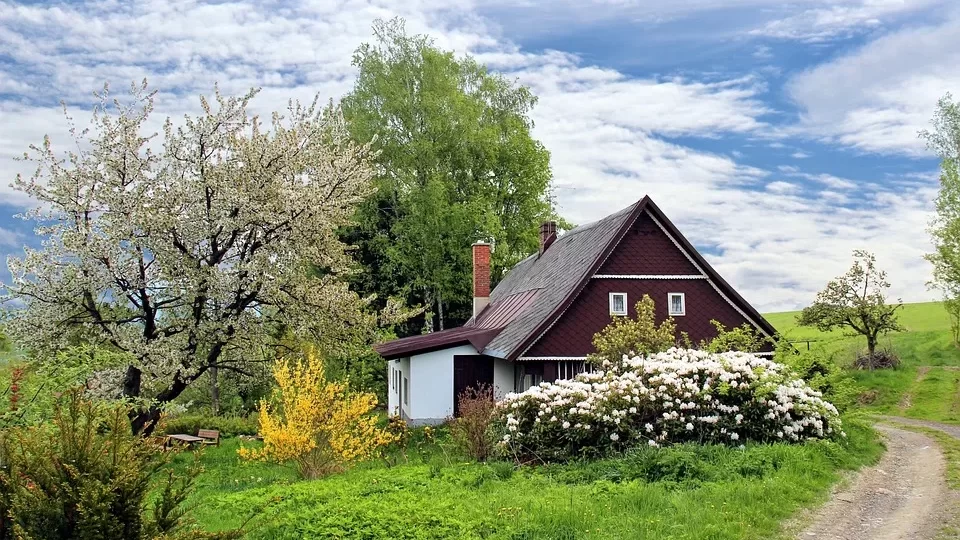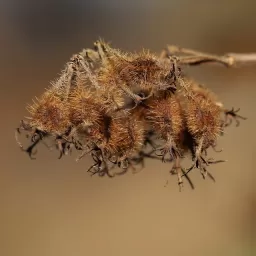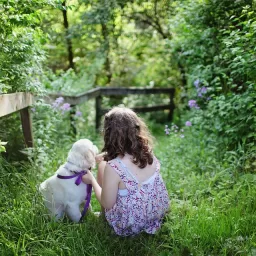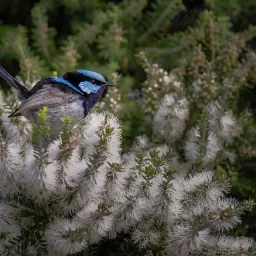
One Pepper You Should Never Grow in Your Home Garden
I’m here in my backyard garden sitting next to my pepper bed. In this bed which is
approximately 4 feet by 8 feet, I’ve got eight different varieties of peppers and four
plants of each variety and I’ve segregated them out. Yes, separating my yellow from my
red peppers man! But anyways, what this episode is about is growing different varieties of
peppers and the one you’re going to want to avoid growing in my humble opinion. So,
every year what I enjoy doing is growing many different varieties of peppers as much as
I like, I don’t know, cayenne peppers, or even better yet the pimento peppers or even
better yet I love the pepperoncini peppers. I always like to experiment, because you know
only through experimentation in your garden and other things in life will you find new
and exciting ways to do things that are maybe even more fun and better than ways you’ve
done them in the past. So this year, you know straight up I’m growing eight different
varieties in this bed and in my other beds I probably have over fifty varieties total
this year of different varieties of peppers easily, probably pushing sixty actually to
see which ones are going to grow better, which ones are going to yield more and more importantly
which ones I’m going to enjoy eating the most because there’s no point in growing
something that you don’t enjoy. Well I enjoy all peppers, you know, not all peppers are
created equal some have amazing flavors and some just have some pase, you know plain bland
flavors. So, in this bed, you guys can see this plant right here just loaded up man.
I mean this is a hot banana pepper. All these guys were planted at the same time. This pepper
bed was actually planted out first before all my other pepper beds in my garden and
this is, depending on the plant, some of them are really productive and some of them are
not so productive. So this hot banana looks like it’s loaded up. I don’t know if you
guys can see over on this one, not quite, you can see a pepper pingling, peppering,
something. Right over here somewhere. That’s actually a sweet banana and that plant is
also loaded up fairly well, looks like it’s got about a dozen peppers on there. The next
plant that’s doing quite well in this bed is right here, it’s a jalapeno pepper and
it’s got at least a dozen little peppers on the plant and you know these plants will
grow for many more months. I mean right now they’re pushing like two or three feet tall
and yes these are in the aqua jet bed. These peppers are growing far better than the peppers
I grew last year with a standard drip irrigation system. So before you poo ideas, you know,
you got to see the results and these stems are thicker, I mean the growth is much more
rambunctious and the production, in my opinion, is more than I’ve gotten last year. So that’s
something to say whether that’s because of the aqua jet system which I think is partially
responsible. But also I’m using better soil this year than I did, have used in previous
years. Plus it’s of course, it’s amended to the hilt of all the good stuff that I like
to put in.
So now we’re going to share with you guys the pepper that I believe you guys should
never grow and they’re right here, they’re on to the edge of the bed. We got a red bell,
yellow bell, and another red bell and the reason simply why you guys should not grow
these in my humble opinion is because while these plants are huge, they’re like three
feet tall. I mean this guy’s pushing, you guys can’t even see it on the video, three
feet tall. Massive amounts of leaves, nice large leaves on these peppers, nice and healthy
plants. In the same bed that I have, you know, plants I’ve got a dozen fruits on them.
These guys are not yet even putting out. They started to put out the buds that are almost
going to open, gonna flower and then actually, hopefully, put on some fruit for me. The red
pepper on the end actually got caterpillar attacks so maybe it wasn’t quite as healthy
and attracted, you know, some pests. Whereas the other guys are doing quite well. I mean
these stalks are really nice and thick, I mean these are like little mini trees man
I’ve never seen peppers grow this well for me. But I mean there’s simply no fruit on
this plant. Now of course, if you check the plant tag. On the back of every plant tag,
it’s going to tell you how long, how many days before you’re going to get fruit. It
says seventy to eighty days and if we go over to the hot banana pull the tag out. That’s
why I put the tag so I know which ones I planted plus I can read the info, seventy-five days
after planting. So, you know, based on this fact that the sweet banana or the hot banana
has like a dozen peppers on it ready. These guys don’t have any, you know, not a good
sign and you know I have grown standard bells, many years in the past just to kind of keep
experimenting to see maybe the soils not right, maybe this, but when I’m growing so many
other varieties of peppers and they’re really doing good and these guys are still not producing
and you know when I, when they do produce and had them produce for me in the past, they
might produce a few peppers. They’re not pepper abundance which I like a lot. So number
one, you know, they’re not producing yet, they’re really healthy, they’re taking
up space. I could be planting a variety that would actually produce me more fruit, more
peppers to eat earlier and plus, you know, peppers are going to taste a lot better. It’s
quite sad when people think peppers, they think bell peppers immediately because that’s
what’s commonly sold in grocery stores. To me the standard bells have, like, very
little flavor. Yeah, they get heavy and big and stuff, that’s probably good for a commercial
trade cause they sell by the pound but they don’t have a lot of flavor and they take
an extended period of time to produce and they don’t produce a lot front what I’ve
seen in my front yard and backyard garden. So next, I told you guys what you shouldn’t
grow as a pepper, now I’m going to share with you guys just maybe some other varieties
that are doing really well in my garden this year to share with you guys some of the ones
I will grow more next year. So one of my favorite peppers that I’m growing
this year is this guy now yes this plant may look small but what many of you guys don’t
realize is that this plant was planted probably like at least two months after the other guys
you saw and check it out, I mean this guy, if I just move back some of these leaves here,
this guy already has fruit already ripping up. This is actually just known as a green
pepper tangerine dream, days of harvest, seventy. This guy is super abundant and still putting
on more flowers so that it can create more fruit for you. Yeah, tangerine dream,
one of my favorites currently this year. Let’s look at a few others.
So here’s another pepper that’s doing excellent this year. This is actually a Japanese
variety. It’s actually called the fushimi pepper and as you guys can see, I mean this
thing, there’s not even a lot of leaves on this plant here. This thing is loaded to
the hilt with peppers. These are long red peppers here, this one is actually about ripe.
Let’s go ahead and pick it and try it on the camera, hopefully, it’s not a super-hot
pepper here. (Tastes pepper) Wow man, growing them in the rock dust this must taste like
ten times better than the peppers you get at the store. Nice pepper flavor, (tastes
pepper) fruity yet sweet, yet complex at the same time. Wow. This pepper’s the bomb.
Loaded to the hilt, tastes amazing. You know, I mean think about it. I wish I planted this
guy in place of those bell peppers I’d be eating a lot more fushimi peppers right now.
So another variety that’s doing quite well right now, you guys can’t see some of these
plants. They’re really tall and this guy’s a bit shorter, he kind of fell over so I just
staked all these guys up recently. You guys can’t see all the fruit on here but this
thing is probably my number one most loaded plant with peppers and it produces a delicious
pepper. Let’s go ahead and see if I can find a ripe one. Here’s a ripe one. It’s
actually dry and all the plant here. Here it is. This is known as a pepperoncini pepper.
You guys, when you guys were a kid you might had a pickled pepperoncinis that were green
and yes you can pick them unripe and pickle them but I prefer to pickle them when they’re
completely ripe or just eat them fresh out of hand. These guys have an amazing flavor.
(Tastes pepper) It’s already dry on the vine. Quite good, I’m going to rip this
guy open. Man, such an amazing flavor in a small amount of pepper. Now you can also just
you know peppers if you have too many of them, I like to dry them like I would sun dry tomatoes
and save them for the winter. Let’s go ahead and look at one more variety of pepper that
I’m growing that’s doing quite well already this early in the season.
Alright, you guys got #pepper envy. Alright, so we’re looking at another one of my plants
that’s actually doing quite well and it’s this guy right here. Some of these plants,
you know, actually have plenty of peppers but this one’s particularly loaded up with
some peppers to eat. It’s called the, let’s see, corbaci pepper. I’ve never grown this
one before, it’s actually quite rare. You’ll never go to a nursery to find these although
you can find the seeds online and they’re all in different stages. Let me go ahead and
try to pull these guys back so you guys can see in there. I mean this guy’s just loaded
up with peppers in different stages and different colors. I always want to encourage you guys
actually to let your peppers fully ripen before harvesting. In this case, these peppers turn
from like a greenish to a yellow to like an orange and then finally to the beautiful,
vivid red color we have here. They’re quite long and now we’re going to get to try one
for the first time. (Tastes pepper) Not quite as good as the fushimi, or whatever, but it’s
a descent pepper. Hopefully, I’ll be getting some more ripping. But it’s a descent pepper,
probably not the best for the flavor but this is our early season pepper so we’ll see
how these other ones ripen a little bit later. But I will know that I will have lots of peppers
to eat coming up real soon. I mean, my pepper beds are abundant and they’re one of the
best crops I grow here in the desert.
So here’s the last shot of my pepper bed. This area is doing quite well. Now, these guys
are pretty small. I had a tomato that kind of came up on its own then kind of shaded
some plants out so that’s why these guys might be small or these guys might just be
smaller plants in general. This guy, you guys can see, will have lots of little peppers
on there. It’s actually called the chili, chill hybrid chili. So that’s actually quite
abundant in peppers and this guy in front doesn’t have so many peppers but they got
a bunch of them on there. They’re actually called the little dickens pepper. So it’s
a cute little one. Now, if you go to your local nursery to buy plants for the most part
you might just find the bell pepper and once again I don’t recommend growing bell peppers.
So the question is where do you get your peppers? So if you want to grow some of these different
and you know unique air loom varieties, you pretty much got to start the seeds yourself.
So if you’re interested in getting some of the pepper varieties that I’ve grown,
it’s quite unfortunate that if you go to your local nursery or big box store to buy
pepper plants, they don’t have that many varieties. In recent years, you know, they’re
getting more varieties and different varieties but they’re not going to get the wide spectrum
of some of these air loom and rare varieties that I’m growing here. So if you want to
grow them yourself, you pretty much need to start, you know, from seed and buy seeds whether
you start from seeds or actually order plants online like I did this year. All these, the
majority of my peppers this year are fifty plus varieties are actually from this company
here, chiliplants.com which are doing great work to preserve the chili heritage and all
the different air loom and rare varieties that you can’t find anywhere else and you’re
only going to know how they grow and how they taste if you try it. So I really want to over
all else in this video, I really want to encourage you guys to experiment with new and different
varieties cause I guarantee it, you will learn about new varieties that you love better but
it tastes and that will even grow better than some of the varieties you are now. One of
the things I’m never going to stop doing is experimenting in the garden. I really want
to encourage you guys to experiment in the garden as well. The final thing I’d like
to say is I always want to encourage you guys is to harvest your peppers when they’re
completely ripe. Peppers in their solanaceae family and the peppers do have, you know,
more toxins in them naturally occurring when the peppers are green. All the green peppers
you find at the supermarket will basically turn into a color, a red, a yellow or orange
pepper if they’re left on the vine longer and that’s why they’re usually half the
price or less because they take much less time to produce then the other peppers that
take a lot more longer to produce but you can have your pepper and eat it too by growing
some of these varieties that I have learned that will produce sooner rather than later
and because they’re producing sooner they’re going to produce sooner and then also they’re
going to continue to produce for a longer period of time because they are producing
for me sooner.
home garden
#Pepper #Grow #Home #Garden
Will be pleased to have you visit my pages on social networking .
Facebook page here.
Twitter account is here.
Linkedin account here
Post byBedewy for info askme VISIT GAHZLY




